 W
WThomas Cauchi was a minor Maltese philosopher who specialised in law.
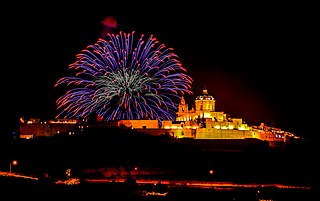 W
WThe culture of Malta reflects various societies that have come into contact with the Maltese Islands throughout the centuries, including neighbouring Mediterranean cultures, and the cultures of the nations that ruled Malta for long periods of time prior to its independence in 1964.
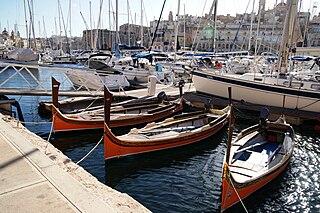 W
WThe dgħajsa tal-pass is a traditional water taxi from Malta. It is often simply referred to as the dgħajsa, but this word refers to any type of boat in the Maltese language. The boat developed in the 17th century, and was extensively used to ferry passengers in the Grand Harbour and Marsamxett Harbour between the 18th and 20th centuries. Their use declined in the late 20th century, and today few dgħajjes remain in operation ferrying tourists around the harbours. Variants of the boats are still used extensively in rowing regattas held twice a year.
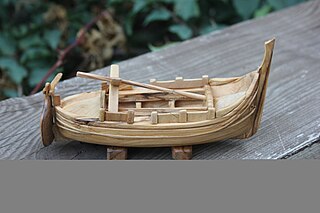 W
WThe ferilla or firilla is a traditional fishing boat from Malta. It bears similarities to the dgħajsa, but it is of stronger construction. The ferilla developed in the 17th century and it was common until about 1900. Some examples of this boat type still exist but they are rare.
 W
WThe Gozo boat was a type of settee-rigged boat originating from Malta. Gozo boats were the main means of transport across the Gozo Channel between Gozo and the main island of Malta from the late 19th to the mid-20th century. The design of the boats developed from the speronara.
 W
WThe kajjik or kajjikk is a traditional fishing boat from Malta. It developed in the 17th century from caïques which were used elsewhere in the Mediterranean. In the past, kajjikki were equipped with sails and oars, but today the fishing boats are powered by inboard motors. Variants of the boat participate in the rowing regattas held twice every year.
 W
WA luzzu is a traditional fishing boat from the Maltese islands. This type of boat developed in the early 20th century, although it is very similar to much older traditional Maltese boats such as the ferilla. They are usually painted in bright colours, while the bow has a pair of eyes.
 W
WThe Maltese is a breed of dog in the toy group. It is thought to have originated in south-central Europe from dogs of spitz type. It takes its name from the Mediterranean island of Malta. This dog, unlike common belief, is not the national dog of Malta.
 W
WMaltese folklore is the folk tradition which has developed in Malta over the centuries, and expresses the cultural identity of the Maltese people. Maltese folklore, traditions and legends still live in the minds of the older-generations, and these are slowly being studied and categorized, like any other European tradition. A number of national and international folklore festivals are undertaken on an annual basis, some of which are under the patronage of the National Folklore Commission and the Ministry for Culture and the Arts. Notably, every December the Malta International Folk Festival is staged in Valletta, with delegates from countries around the World.
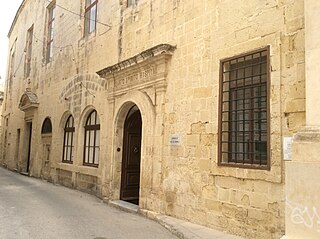 W
WThe National Archives of Malta is the central archive maintained by the Mediterranean island nation of Malta. The Archives has been housed in the Grandmaster's Palace for most of its lifetime, having moved to three separate locations during the late 1980s. In 1988, the Legal Documentation Section of the National Archives of Malta was opened, after records of court and tribunal hearings and decisions had been transferred to a Mdina facility beginning the previous year. A Gozo facility was opened soon after, and in 1994, the then-President of Malta, Ugo Mifsud Bonnici, officially opened the Archives' new Rabat head office and main facility. All of the Archives' locations feature a reading room, with facilities for researchers open to those over the age of sixteen who produce valid identification.
 W
WThe National Inventory of the Cultural Property of the Maltese Islands (NICPMI) is a heritage register listing the cultural property of Malta. The inventory includes properties such as archaeological sites, fortifications, religious buildings, monuments and other buildings. The NICPMI is under the responsibility of the Superintendence of Cultural Heritage (SCH), which was founded in 2002 to replace the Antiquities Act. The NICPMI was established on 16 December 2011.
 W
WThe National Library of Malta, often known as the Bibliotheca, is a reference library in Republic Square, Valletta, Malta. It was founded by Grand Master Emmanuel de Rohan-Polduc in 1776 out of the collections of the knight Louis Guérin de Tencin. It has been a legal deposit library since 1925, and it has the largest collection of Melitensia along with that of the University of Malta. The library also contains the archives of the Order of St. John, the Università of Mdina and the Università of Valletta.
 W
WThe Maltese are a nation and ethnic group native to Malta who speak Maltese, a Semitic language. Malta is an island in the middle of the Mediterranean Sea. Included within the ethnic group defined by the Maltese people are the Gozitans who inhabit Malta's sister island, Gozo.
 W
WThe predominant religion in Malta is that of the Catholic Church. The Constitution of Malta establishes Catholicism as the state religion, and it is also reflected in various elements of Maltese culture; however, in recent years the church has experienced decline in influence and importance. According to a 2018 survey, the overwhelming majority of the Maltese population adheres to Christianity (95.2%) with Catholicism as the main denomination (93.9%). According to a Eurobarometer survey conducted in 2019, 83% of the population identified as Catholic.
 W
WSaint James Cavalier is a 16th-century cavalier in Valletta, Malta, which was built by the Order of St John. It overlooks St James' Bastion, a large obtuse-angled bastion forming part of the Valletta Land Front. St James was one of nine planned cavaliers in the city, although eventually only two were built, the other one being the identical Saint John's Cavalier. It was designed by the Italian military engineer Francesco Laparelli, while its construction was overseen by his Maltese assistant Girolamo Cassar. St James Cavalier never saw use in any military conflict, but it played a role during the Rising of the Priests in 1775.
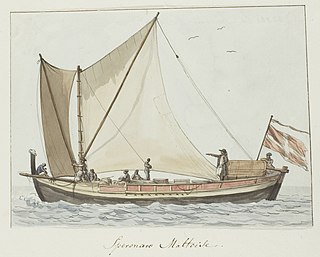 W
WThe speronara was a type of small merchant craft originating from Malta which was used in the Mediterranean from the 16th to the early 20th centuries. The vessels usually had no deck and only one mast, often with a lateen or sprit sail. Some larger vessels had a half deck or up to three masts.
 W
WThe St Monica Choir was founded in 1964 by Sr Beniamina Portelli, and was one of Malta's leading polyphonic choirs. The choir's music repertoire varied from sacred to popular, early to contemporary. It disbanded in 2018, with most of its choristers remaining in the newly formed St. Monica Vocal Ensemble.